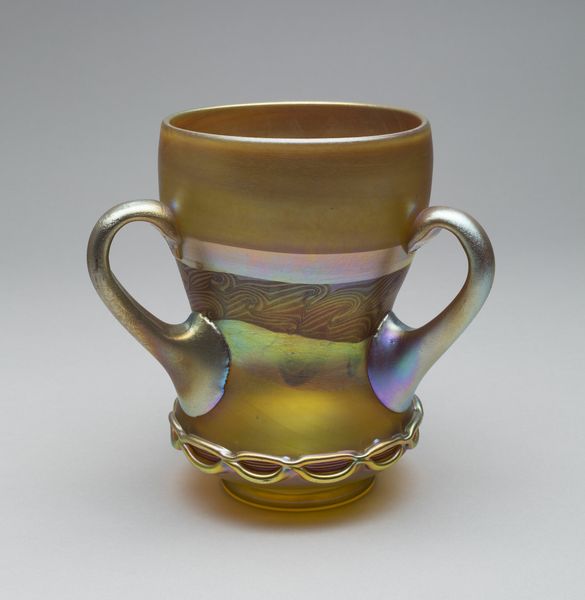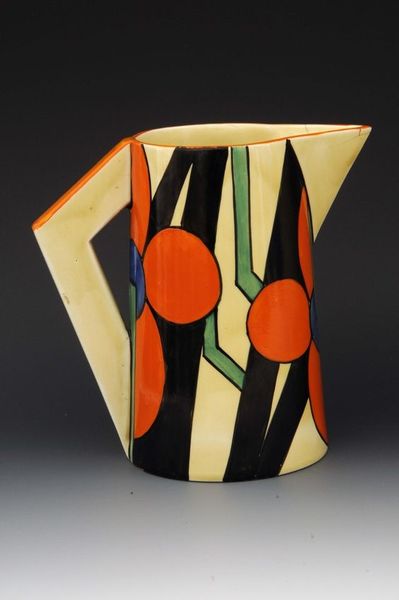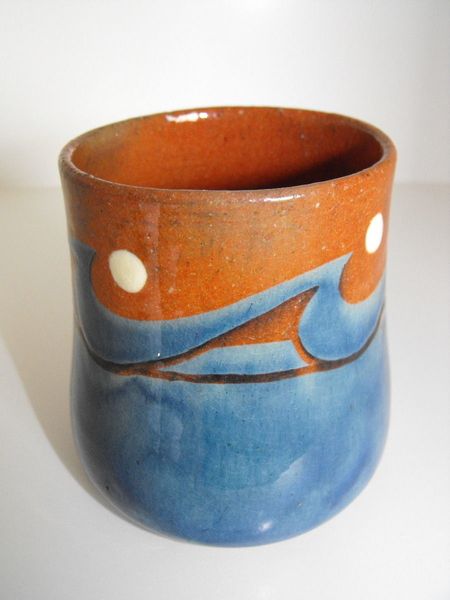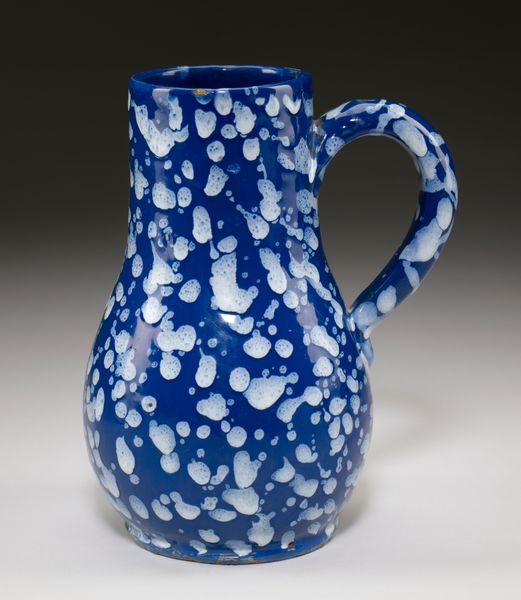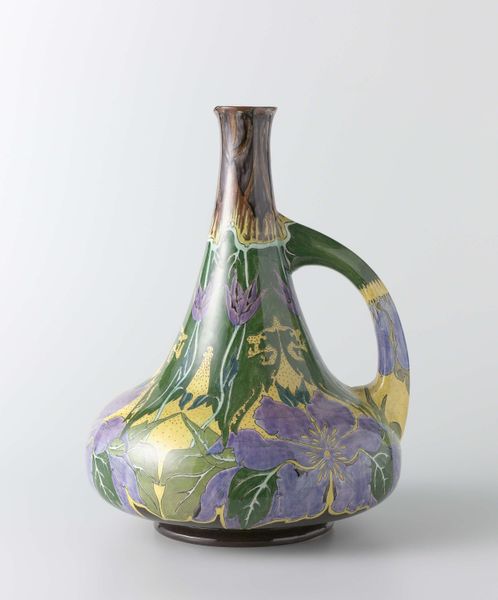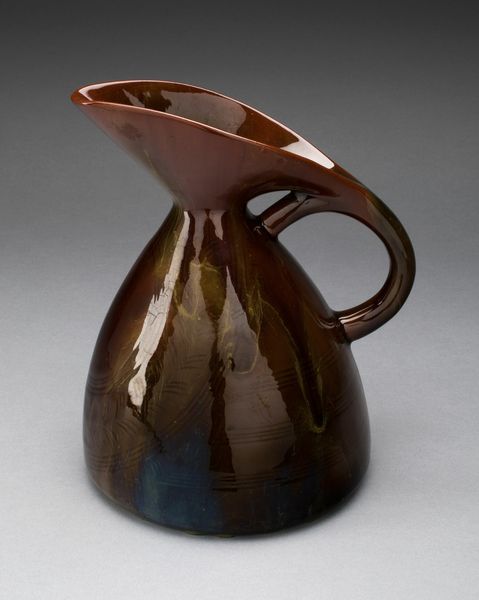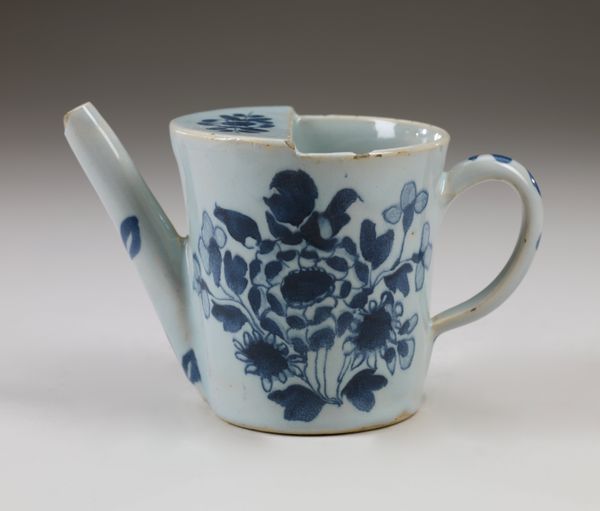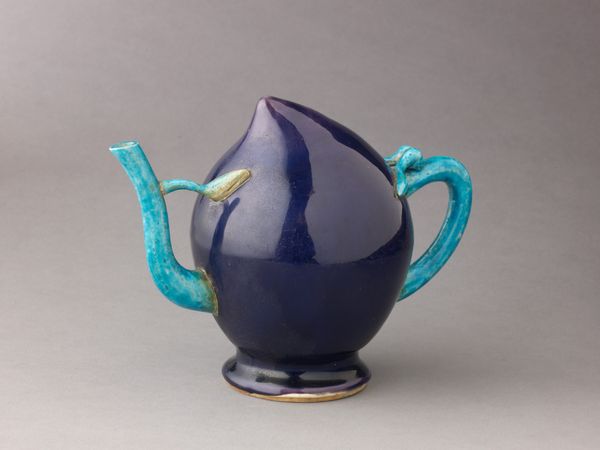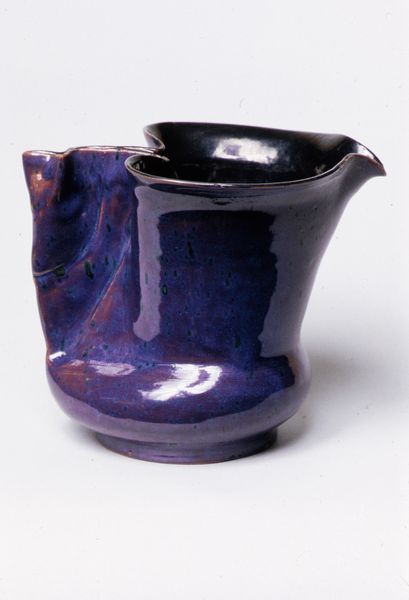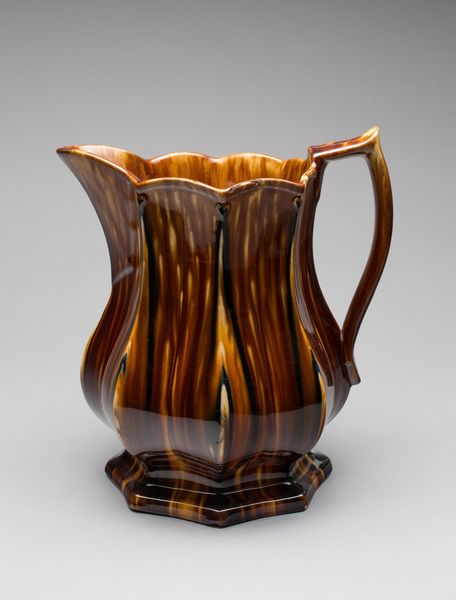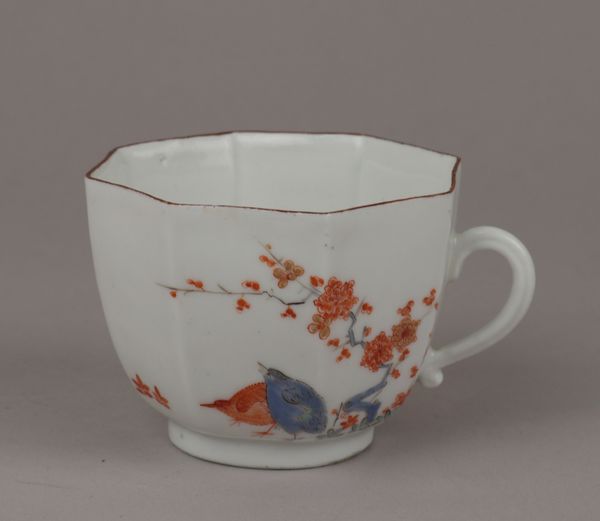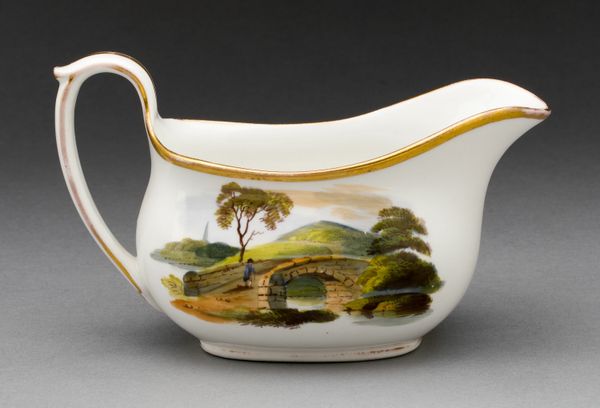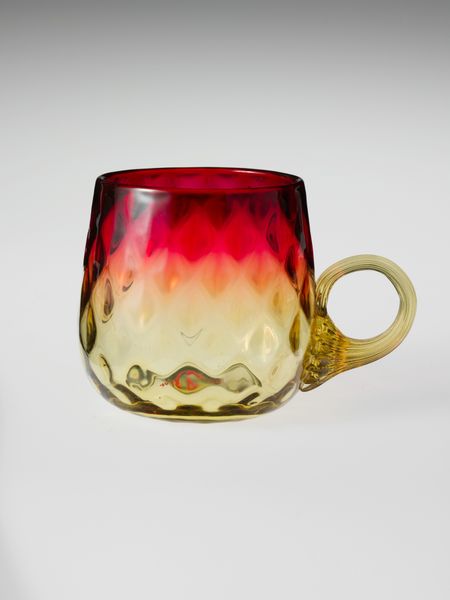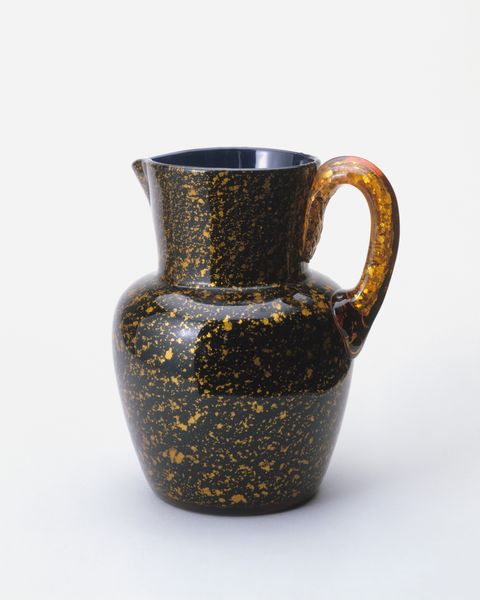
ceramic
#
art-deco
#
landscape
#
ceramic
#
geometric
Copyright: Clarice Cliff,Fair Use
Curator: Immediately, I notice the bold colors and almost naive execution. There's a vibrancy despite the somewhat somber scene. Editor: You’ve keenly observed this large ceramic jug created around 1930 by Clarice Cliff. It's titled "Bizarre Large Athens Jug, Blue Autumn Pattern.” Cliff was revolutionary in that she employed working class women to create and decorate her ware at A.J. Wilkinson's Royal Staffordshire Pottery. Curator: So this vibrant jug was likely a mass-produced item, destined for everyday use, blurring lines between industry and what was considered "high" art. This was radical because it democratized design and ownership! And I see the hand-painted application is, as you mentioned, by working-class women. It makes one consider labor conditions within the pottery during that period. Were these workers paid fairly for such a stylized and artistic object? Editor: Indeed. Consider also the Art Deco movement—its influence permeates this jug, but it also reflects the shifting roles of women in society at that time. This wasn’t just tableware, it became a symbol of progress. The “Bizarre” in the piece’s title suggests a boldness and departure from conservative art standards, empowering consumers to possess what would have been “avant garde”. Curator: Right. Let's focus on production techniques. Clarice Cliff employed transfers alongside her hand-painted elements, she was known for her modernistic techniques and accessible material costs. Were her Art Deco, bold forms purely aesthetic or commentary on society's changes? I see its playful angular form, as well as this somewhat asymmetrical design. Editor: It’s both, surely! It also represents an increasing democratization in consumerism. Ownership of "art" became more common, regardless of socioeconomic level. By creating affordable yet stylish pottery, Clarice Cliff gave modernism accessibility through consumer objects. Her designs capture that feeling of modern identity that many felt during the interwar period. Curator: So the landscape depicted then is an invitation for aspiration, a bold aesthetic that challenges traditional decorative forms? It reflects social change by way of functional art! Editor: Absolutely. What started as tableware becomes imbued with these complexities. The object isn't passive—it's actively participating in cultural conversations, on feminism, design theory, and societal progress! Curator: The impact of the pottery’s bright application, I think, is far greater now understanding it represents progress and democratized expression, than I initially realized! Editor: Precisely! Everyday art can provide insight into not just consumer habits but progressive movements!
Comments
No comments
Be the first to comment and join the conversation on the ultimate creative platform.
